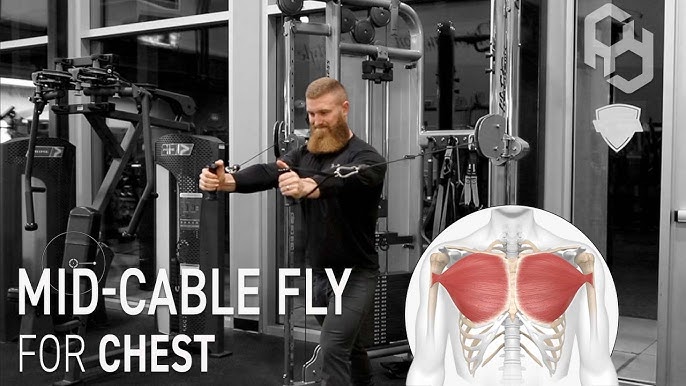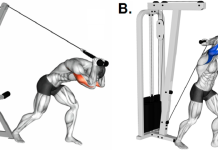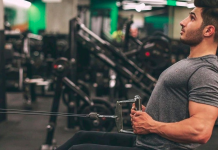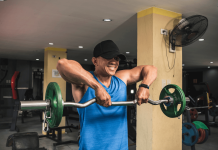The Power of Cable Flys for a Sculpted Chest
When it comes to sculpting a chiseled chest, few exercises can rival the effectiveness of cable flies. This isolation exercise specifically targets your pectoral muscles, helping you develop that sought-after chest definition. In this article, we’ll uncover the secrets to mastering cable flys and harnessing their full potential.
Benefits of Incorporating Cable Flys into Your Workout Routine

Before we get into the nitty-gritty of cable fly technique, let’s explore why you should consider adding this exercise to your workout routine.
Targeted Muscle Engagement:
Cable flies focus squarely on your chest muscles. By isolating the pectorals, you can stimulate muscle growth and achieve that well-defined chest you’ve been striving for.
Variability:
Cable fly machines come with adjustable settings, allowing you to customize the resistance and angle. This versatility lets you tailor your workouts to your specific goals and fitness levels.
Balanced Development:
Cable flies also help balance your chest development. They can highlight any imbalances between your left and right pectoral muscles, ensuring a symmetrical physique.
Reduced Risk of Injury:
Compared to free weights, cable machines offer a safer way to perform chest exercises. The controlled motion reduces the risk of strain or injury.
Improved Mind-Muscle Connection:
Cable flies encourage you to focus on your chest, enhancing the mind-muscle connection. This heightened awareness can lead to more effective workouts and better results.
Perfecting Your Cable Fly Form for Maximum Results
Now that you’re aware of the incredible benefits cable flies offer, let’s dive into the technique to ensure you’re maximizing those gains.
Setup
Begin by adjusting the cable machine to chest height. Attach the D-handles to the pulleys and choose an appropriate weight. Stand with your feet shoulder-width apart, maintaining a slight bend in your elbows.
Body Positioning
Position yourself at the center of the cable machine, facing away from it. Take a small step forward with one foot, creating a stable stance. Maintain a neutral spine and engage your core.
Execution
Extend your arms out to the sides, keeping a slight bend in your elbows. Your palms should be facing forward. This is your starting position.
The Movement
Inhale as you bring your hands together in a controlled arc, crossing them in front of your chest. Focus on squeezing your chest muscles throughout the movement. Exhale as you return to the starting position.
Reps and Sets
Perform 3-4 sets of 10-12 reps to start. As you progress, increase the weight gradually.
Advanced Cable Fly Variations for Intensified Chest Training
Once you’ve mastered the basic cable fly, it’s time to level up your chest training with advanced variations. These variations can target different areas of your chest and provide a fresh challenge to keep your workouts exciting.
Incline Cable Flys:
Adjust the bench to an incline position and perform cable flys. This targets the upper chest and adds dimension to your chest development.
Decline Cable Flys:
Likewise, setting the bench to a decline angle emphasizes the lower chest. This variation can help create a well-rounded chest shape.
Single-Arm Cable Flys:
Performing cable flies one arm at a time can help correct muscle imbalances and enhance your mind-muscle connection.
Cross-Body Cable Flys:
Instead of bringing your hands together in front of your chest, cross them over your body. This movement engages the inner chest muscles and adds a unique twist to your workout.
Supersets and Drop Sets:
Incorporate cable flys into supersets or drop sets with other chest exercises to intensify your training and shock your muscles into growth.
Crafting Your Cable Fly Workout Routine
Now that you’re armed with knowledge about cable flys and their variations, let’s structure a sample cable fly workout routine tailored to different fitness levels:
Beginner’s Routine (3 Days a Week)
Cable Flys: 3 sets of 10-12 reps
Push-Ups: 3 sets of 10-12 reps
Rest: 1-2 minutes between sets
Intermediate Routine (4 Days a Week)
Incline Cable Flys: 4 sets of 10-12 reps
Decline Cable Flys: 4 sets of 10-12 reps
Push-Ups: 3 sets of 15-20 reps
Rest: 1-2 minutes between sets
Advanced Routine (5 Days a Week)
Incline Cable Flys: 4 sets of 10-12 reps
Decline Cable Flys: 4 sets of 10-12 reps
Single-Arm Cable Flys: 3 sets of 10-12 reps per arm
Cross-Body Cable Flys: 3 sets of 10-12 reps per side
Push-Ups: 3 sets of 15-20 reps
Rest: 1-2 minutes between sets
frequently asked questions related to cable flys:
FAQ 1: What are cable flies, and how do they differ from other chest exercises?
Answer: Cable flies are chest exercises performed using a cable machine. They differ from other exercises as they isolate the pectoral muscles, offering controlled resistance and a unique range of motion that targets the chest specifically.
FAQ 2: Are cable flies suitable for beginners?
Answer: Yes, cable flies can be adapted to different fitness levels. Beginners should start with light weights and focus on proper form. As you become more comfortable, you can increase the resistance gradually.
FAQ 3: What are the common mistakes to avoid when doing cable flys?
Answer: Common mistakes include using too much weight, rounding the shoulders, and not fully extending the arms during the exercise. Maintaining proper form is crucial to prevent injury and maximize results.
FAQ 4: How can I incorporate cable flys into my existing workout routine?
Answer: You can add cable flys as a chest-focused exercise within your routine. For example, you can perform them after compound movements like bench presses or as part of a dedicated chest day.
FAQ 5: Do cable flies help with chest definition and muscle separation?
Answer: Yes, cable flies can enhance chest definition by targeting and isolating the pectoral muscles. Consistent training can lead to improved muscle separation and a more sculpted chest.
FAQ 6: Is it necessary to use a cable machine for cable flies, or are there alternatives?
Answer: While cable machines are ideal, you can replicate cable flys using resistance bands anchored at chest height. This provides a similar range of motion and muscle engagement.
FAQ 7: How often should I do cable flys for optimal results?
Answer: The frequency of cable flies depends on your overall workout routine. A general guideline is 2-3 times a week with proper rest between sessions to allow for muscle recovery.
FAQ 8: Can cable flies help correct chest muscle imbalances?
Answer: Yes, cable flies can be beneficial for correcting muscle imbalances because they isolate each side of the chest. Consider incorporating single-arm cable flies into your routine to address imbalances.
FAQ 9: Should I perform cable flys before or after compound chest exercises like bench presses?
Answer: It’s generally recommended to perform compound exercises before isolation exercises like cable flies. This allows you to target larger muscle groups first and then focus on specific muscle isolation.
FAQ 10: How can I prevent shoulder strain while doing cable flys?
Answer: To prevent shoulder strain, maintain proper posture, and avoid excessive weight. Ensure your shoulders are relaxed and not shrugged during the exercise. If you feel discomfort, reduce the weight and focus on form.
Conclusion
Cable flies are a versatile and effective exercise for sculpting a powerful chest. With their numerous benefits and various exercise variations, they deserve a prominent place in your workout routine. Whether you’re a beginner or a seasoned fitness enthusiast, cable flies can help you achieve a sculpted chest that turns heads.




